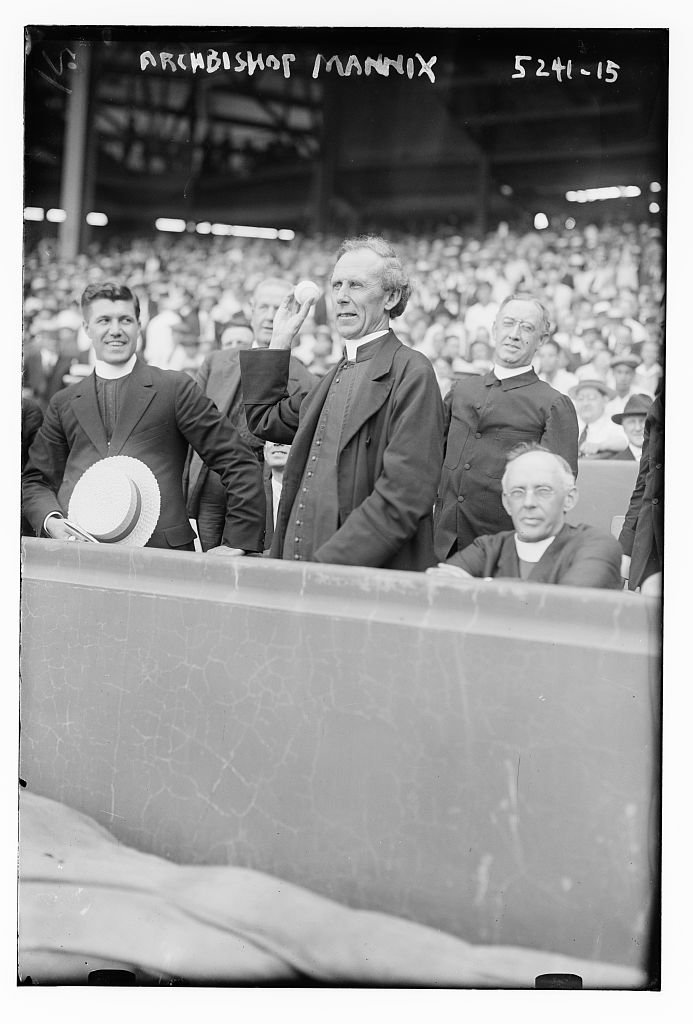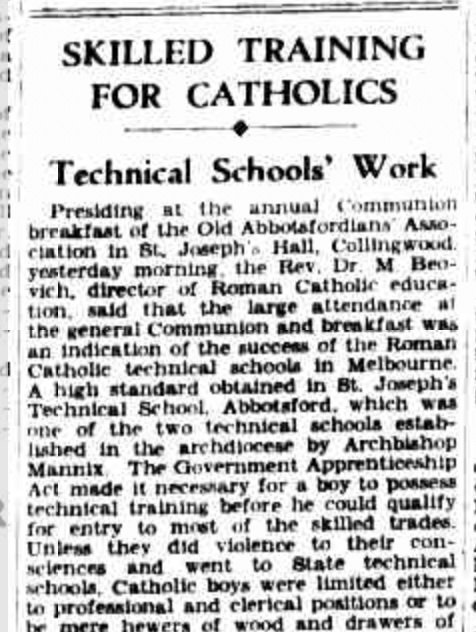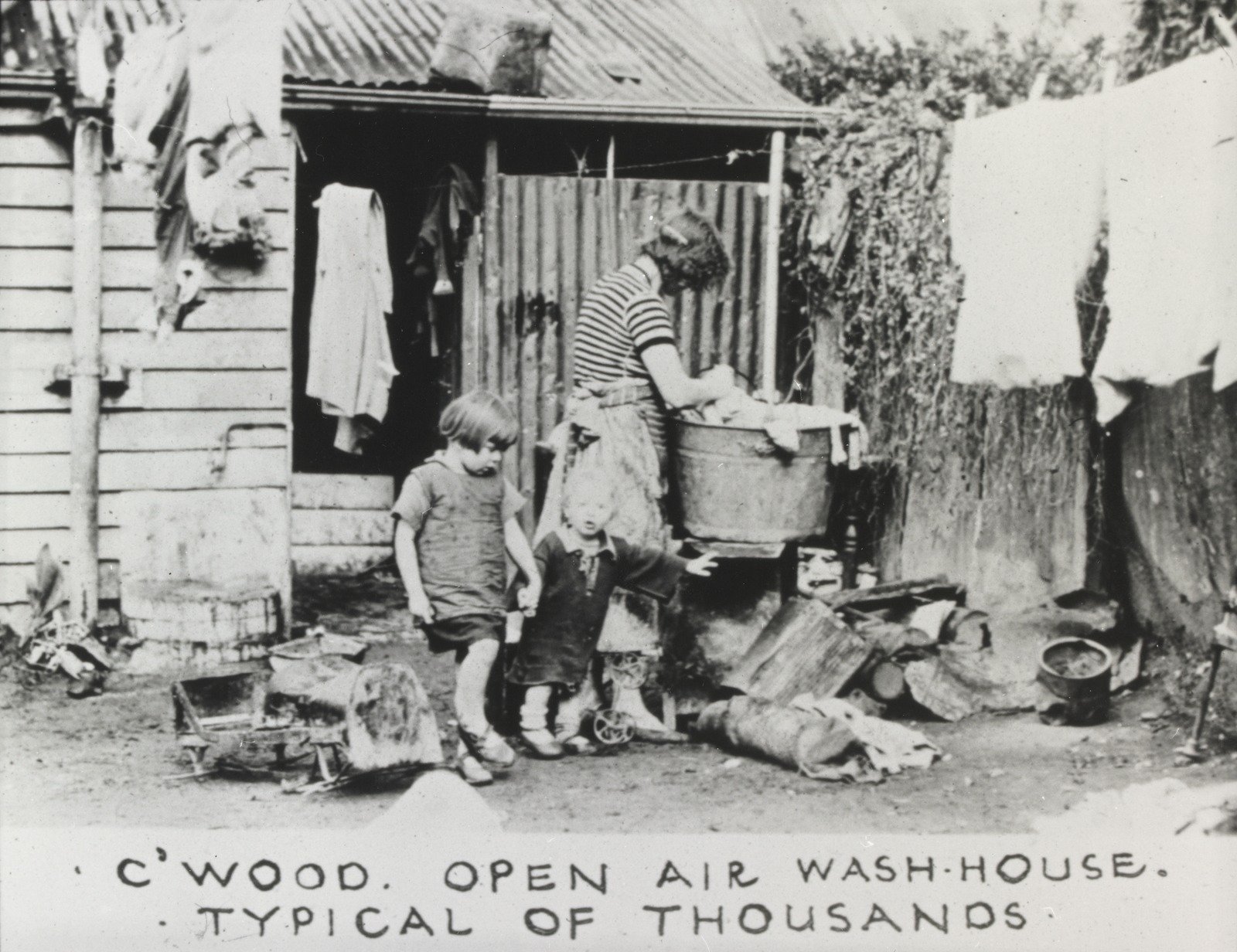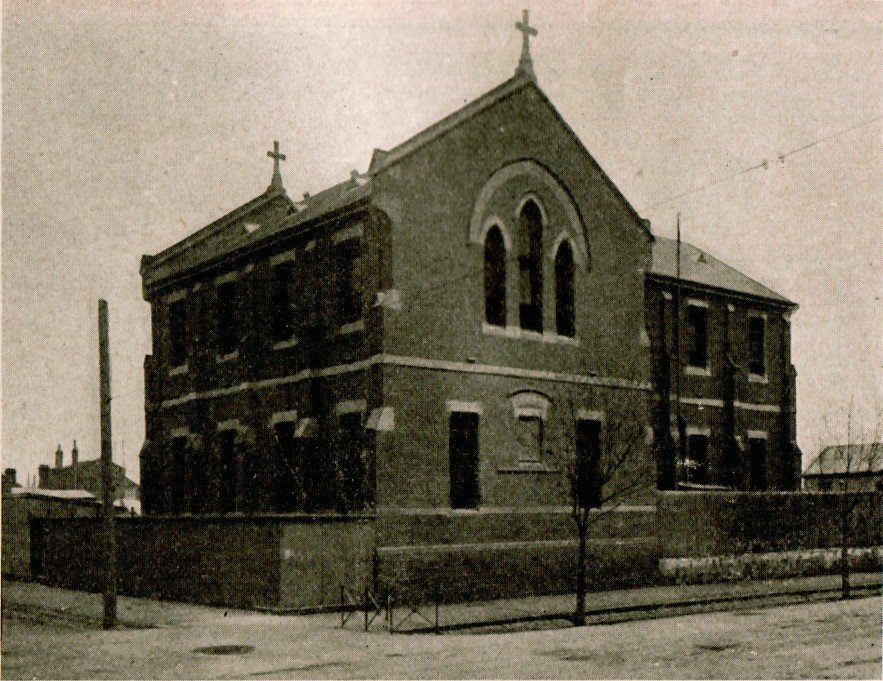St Joseph’s Technical College ~ helping build futures in challenging times
From the Kelty Archives comes a photograph taken in 1938 which reminds us of the early formation of Melbourne - both its Catholic education system, largely supported by the Christian Brothers, and its ecclesiastical buildings.
The photo below shows three Brothers at a very unusual vantage point in Melbourne. They were next to the Cross that sits on top of the Spire of St Patrick’s Cathedral. There are three spires, and we are not sure which one they were on top of, but the tallest one is 105 metres above the ground. The three men – Matt McGrath, Kiaran Byrne, and Berchs McDonogh – were teaching at St Joseph’s Technical School, Abbotsford, at the time and living at Victoria Parade, just a Stone’s throw from the Cathedral. They would have attended Sunday Mass there regularly.
The Cathedral was built over a long period – the foundation stone was laid in 1858, it was consecrated in 1897, but was not completed until 1939. The photo of the three men was taken in 1938. How they managed to get permission to be where they were or why they had taken such a keen interest is unknown. However, as they were all interested in technical work, we can assume that they had a natural interest in the construction work.
“There is no specialisation in any one subject at St. Joseph's College. The boys are given a general training in all branches, and, with the good foundation obtained in this way, they are able, without difficulty, to determine which trade is most to their liking. The Brothers are doing a splendid work, and they are well worthy of the best support of Catholic parents who are anxious to see their boys take up trades for which they are best fitted. "
~ The Advocate, 1930
The Christian Brothers Response to the Depression of 1891
The Christian Brothers’ primary mission of helping pupils to rise above the poverty that so often afflicted Irish Catholics was tested soon after their establishment of Parade College in 1871. Following the meteoric rise of investment in Melbourne of the 1880’s, the 1890’s was characterised by hardship, unemployment and struggle.
The land boom bubble throughout the colonies of the 1880’s had burst, overseas investment dried up, banks failed and unemployment soared. Relief societies were formed in many parts of the country to distribute aid to poverty-stricken families – generally of meat, bread and tea. Families in the poorer suburbs of major cities were desperate. This depression, which saw real GDP fall 17% over 1892 and 1893, and the accompanying financial crisis, which reached a peak in 1893, was the most severe in Australia's history.
It is in this context that the Christian Brothers opened St Joseph’s in Abbotsford in 1893, initially as a primary school for boys. The Catholic Church’s struggle with the State for education funding continued, with Archbishop Daniel Mannix reiterating the claim at every new school opening. He and his predecessors, opposed the Education Act of 1872 which saw the removal of government financial subsidies to church schools.
With the removal of funding, Catholic bishops invited English, Irish, and European religious orders to help staff existing schools and establish new ones.
This period between 1872 and the early 1900s is one of gradual expansion, with emphasis being placed on providing places in primary schools. The efforts of religious orders, with almost no money and in the face of considerable hardship, were nothing short of heroic. The Christian Brothers was the largest of the male teaching orders.
From the humble beginnings of 3 brothers landing on Australian shores in 1843, by 1900 there were 115 Christian Brothers teaching in thirty schools around Australia.
Under their influence, Catholic schools not only survived but flourished; the brothers were to be the mainstay of the schools for a hundred years.
St Joseph’s Technical College Abbotsford
In 1893 St Joseph’s school in Nicholson Street opened its doors to 400 boys, later becoming St Joseph’s Technical College providing inner-city technical education until 1990. It was then home to the Sophia Mundi Steiner Primary School until 2012 when the building started to be used as creative studios.





